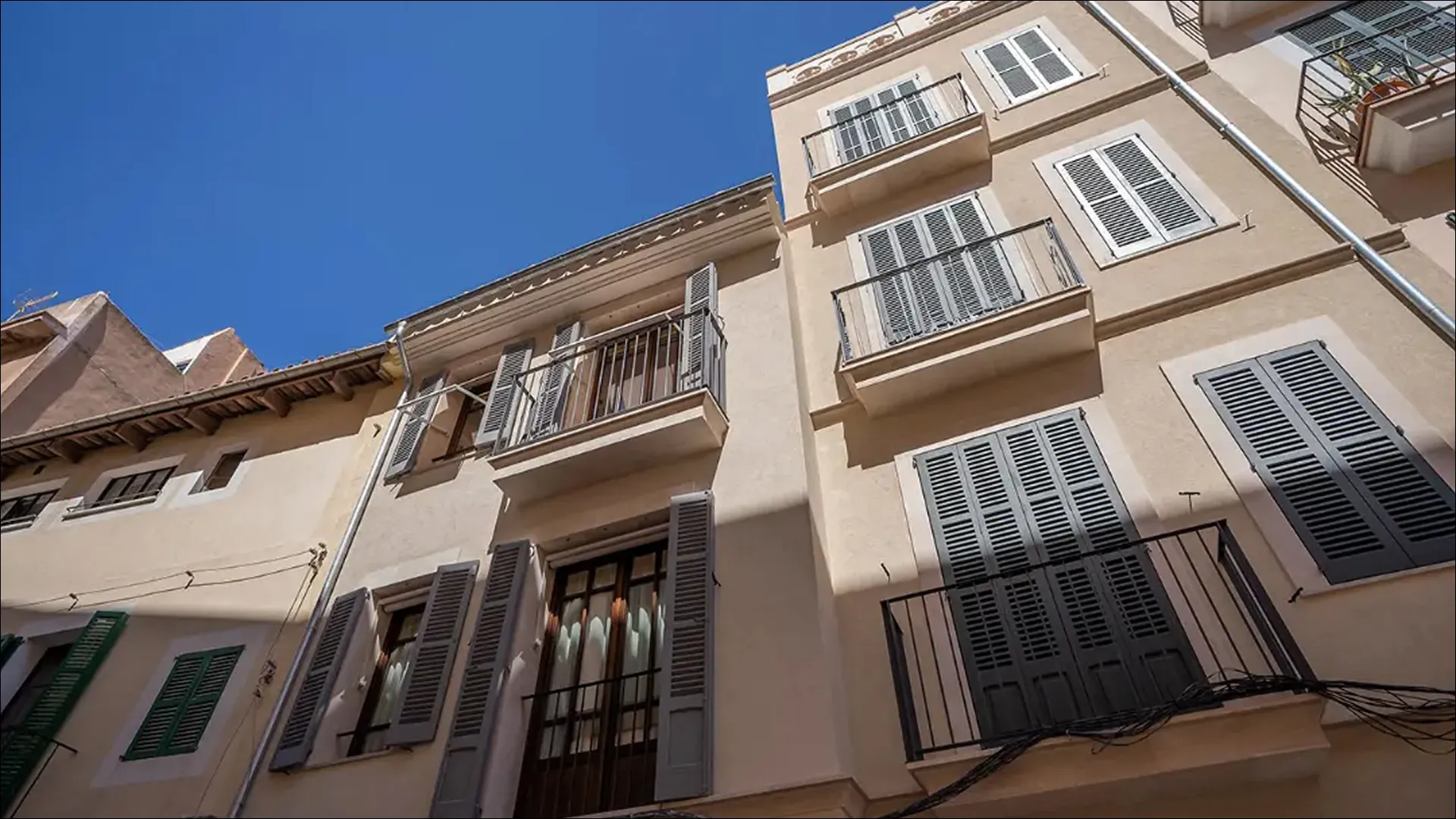TL;DR: The Spanish Nota Simple Explained
- What is it? Often called the “simple nota”, the Nota Simple is an official report from the Spanish property registry that summarizes a property’s legal and financial status.
- Why is it important? It protects you, the buyer, by revealing ownership, debts, mortgages, and restrictions before purchase.
- When should you request it? Before making an offer, before signing a private contract (arras), and right before signing the deed (escritura).
- Who can request it? Any buyer, seller, lawyer, lender, or real estate professional with a legitimate interest.
- How much does it cost? Around €3.64 + VAT in person or €9.02 + VAT online.
At Reiderstad Invest, we handle the nota simple process for our clients to ensure absolute clarity before committing to a property purchase in Mallorca or anywhere in Spain.
Introduction
If you’re considering buying a property in Spain, the Spanish ‘Nota Simple’ is one of the most important documents to request before making any decisions. While navigating the Spanish real estate market can be exciting, it also requires a clear understanding of the key documents involved.
At Reiderstad Invest, we prioritise guiding our clients through every step of the buying process. The nota simple is central to this process, as it provides a verified overview of a property’s legal and financial status. Understanding what it is and why you need it will give you the confidence to approach your purchase knowing that your investment in Spain, whether in Mallorca or elsewhere, is fully protected.
With Reiderstad Invest, you have the security of knowing that every property in our Mallorca collection is fully vetted and legally checked before it reaches our portfolio, meaning you don’t need to worry about requesting a nota simple when working with us.
Explore our vetted luxury property collection for sale in Mallorca ⇒
What Is a Nota Simple and Its Role in Property Transactions
At its core, a nota simple (or “simple nota” for the exact English translation) is a detailed property report sourced directly from the Spanish property registry. It presents a verified, official description of the property or land you are interested in buying. This simple note is designed to be purely informational, but its contents are vital for making sound financial and legal decisions.
The main role of the nota simple in property transactions is to offer security and transparency. It gives you a clear picture of the property’s legal status before you commit to a purchase. By reviewing this document, you can confirm ownership, identify potential debts, and understand any limitations that might affect the real estate.
You should never proceed with a purchase until you are completely satisfied with the information presented in the nota simple. It is the foundational document that helps you and your advisors conduct due diligence, ensuring a smoother and safer transaction from start to finish.
Explore this new build right in the center of Palma’s exclusive Old Town ⇒
Key Details Included in a Nota Simple Document
So, what exactly can you expect to find in a nota simple? This report from the property registry provides a concise yet comprehensive summary of the property’s most important details. It is designed to give you a complete overview at a glance.
The information is typically organized into clear sections, making it easy to identify critical data. The date of issue is always stated at the top, which is important as the information is only valid for a limited time.
Here are some of the key details you will find:
- Property Description: This includes the location, boundaries, total square meters, and the type of property (e.g., residential, agricultural).
- Ownership Information: It lists the names of the current owners and their percentage of ownership.
- Debts and Encumbrances: This section reveals any mortgages, liens, or unpaid taxes attached to the property.
- Unique Identifiers: The document includes the property registry number and often the cadastral reference number, which helps coordinate information with the Cadastre.
When Should You Request a Nota Simple?
Timing is everything when it comes to reviewing a nota simple. Since the information is only valid as of the issue date, it is essential to request an updated version at key stages of the buying process. This ensures that you are always working with the most accurate details.
Here are the moments when you should obtain a nota simple:
- Before making an offer: Confirm that the seller is the rightful owner and that there are no unexpected debts or disputes.
- Before signing the private purchase contract (contrato de arras): Protect your deposit by ensuring the property’s legal status is clear.
- Immediately before signing the deed of sale (escritura de compraventa): This is the most important moment, as your lawyer and the notary will verify the latest nota simple to confirm that nothing has changed.
By following this timeline, you minimize risks and maintain full transparency throughout the transaction.
Have all the W questions? Feel free to schedule a quick chat with one of our experts ⇒
Why the Nota Simple Is Essential for Property Buyers
For any prospective buyer, the nota simple is an extremely important document with significant legal importance. It empowers you with the knowledge needed to make an informed decision and protects your investment in Spanish real estate. Anyone with a legitimate interest in a property can request it, making it an accessible tool for due diligence.
Before you even think about making an offer, obtaining a nota simple should be your first step. It provides a transparent look at what you are actually buying, free from the seller’s claims or promises. Let’s look at how it protects you from risks and how it differs from other legal documents.
How It Protects You, The Buyer, from Hidden Risks
The primary benefit of a nota simple is its ability to reveal hidden risks that could turn your dream property into a nightmare. It acts as a protective shield, flagging potential legal and financial issues before you are legally bound to the purchase.
By carefully reviewing the encumbrances section, you can verify if the property is free of claims. This is where you will find information on existing mortgages that a lender has on the property, which must be cleared before the sale. It also details other limitations that could impact your use and enjoyment of the property.
Some of the hidden risks a nota simple can uncover include:
- Liens: Unpaid tax debts or claims from creditors.
- Mortgages: Existing loans secured against the property.
- Easements: Rights of way granted to neighbors or utility companies.
- Ownership Disputes: Issues related to inheritance or unresolved claims on ownership rights.
Legal Importance Versus Title Deeds
It’s a common question: is a nota simple the same as the property’s title deeds? The simple answer is no. While both are crucial, they serve different purposes. The title deed, or escritura de compraventa, is the official document signed before a notary that legally transfers ownership to you.
In contrast, the nota simple is an informative document, not a legally binding proof of ownership in court. Its purpose is to provide a current snapshot of the property’s legal status as recorded in the land registry. It confirms who the registered owner is and what charges are listed at that specific moment.
Before you sign the final deed of sale, your lawyer and the notary will request an updated nota simple to ensure nothing has changed. While the title deed is the ultimate proof of your ownership, the nota simple is the essential verification tool you use throughout the buying process.
Beginner’s Guide: Getting Your Nota Simple in Spain
Ready to get your hands on a nota simple? Fortunately, the process is quite straightforward. Whether you’re investigating a property on the Costa del Sol or in another part of the country, the Spanish property registry system is accessible to everyone. The main official source is the Colegio de Registradores.
You can request a nota simple from the property registry of Spain either online or in person, and the turnaround is usually quick. To help you get started, here is a simple guide on what you’ll need and the steps to follow.
What You’ll Need Before Requesting a Nota Simple
Before you begin your request, it’s helpful to gather a few key pieces of information. Having the right property details on hand will make the process much faster and ensure you get the correct report. The easiest way to get this information is by asking the seller or through Reiderstad Invest, who can gather the details for you.
You will also need to provide your own identification details to process the request, such as your full name, ID or passport number, and an email address where the document can be sent. This is required to show you have a legitimate reason for the request.
Here’s a list of the property information you should have:
- Registry Details: The unique property number (número de finca registral) and the location of the registry office.
- Property Address: The full and exact address of the property.
- Owner Information: The full name and ID/passport number of the current owner.
- Unique Identifier (IDUFIR/CRU): This is the most accurate way to identify a property if you have it.
Step-by-Step Process to Obtain a Nota Simple
Once you have the necessary information, you can officially request the nota simple extract. The process is designed to be efficient, especially if you choose the online route through the Colegio de Registradores website. Each method has its own costs and benefits, so you can choose the one that works best for you.
Reiderstad Invest can also handle this request for you, managing the process efficiently and ensuring you receive the correct documentation.
Here is a comparison of the different methods to request a nota simple from the registry:
| Request Method | Official Cost (approx.) | Processing Time | Best For |
|---|---|---|---|
| Online | €9.90 | 4-24 hours | Convenience and speed. The document is sent to your email. |
| In-Person | €3.64 + VAT | Immediate to a few hours | Getting the document quickly if you are near the registry office. |
| Real Estate Agent | Varies (service fee added) | Varies | Buyers who want their agent to handle the entire process. |
Step 1: Gather Property Details and Owner Information
Collecting essential information about the property and its current owners is crucial. Start by noting the cadastral reference, a unique identifier that confirms property specifics such as dimensions and location. Next, gather data about the registered owners, including their names and passport numbers. This step ensures clarity regarding ownership rights and helps identify any possible encumbrances or legal statuses tied to the property. Accurate details will streamline your search and facilitate the process in securing your dream property in Spain.
Step 2: Choose Your Request Method (Online, In-Person, Through an Agent)
Selecting the right method to request the nota simple can streamline your experience. Online requests are convenient, allowing you to access the property registry from anywhere, while in-person visits provide an opportunity for direct engagement with officials, ensuring any immediate questions can be addressed. Alternatively, enlisting a real estate agent can lighten your load; they understand the ins and outs of the process and can manage the details on your behalf, ensuring you receive the most accurate and timely information.
Step 3: Submit the Application and Pay Fees
The last step is to complete the application and pay the associated fees. If you are requesting the nota simple online, you will fill out a digital form on the property registry website. The form will guide you through entering the property details you gathered.
After filling in the required fields, you will proceed to a payment gateway to pay the fee, which is around €9.02 plus VAT for an online request. Once the payment is complete, your request is submitted to the registry. The nota simple will then be processed and sent to the email address you provided.
If you choose to go in person, you will fill out a form at the registry office and pay the fee there, which is slightly cheaper at around €3.64 plus VAT. You will typically receive the document on the same day.
Interpreting Your Nota Simple: What to Look For
Once you receive the nota simple, the next step is interpretation. This document is packed with important information, and knowing what to look for is key to understanding the property’s true legal status. You should pay close attention to details about ownership, encumbrances, and any listed rights of way.
A careful review of the registration details will help you confirm that everything is in order. If you are unsure about any of the terminology, it is always best to consult with a legal professional. Let’s break down the most critical sections to examine and what to do if you find any issues.
Understanding Ownership, Liens, and Encumbrances
When you review your nota simple, three sections are particularly important for understanding the property’s legal status. First, check the ownership rights to confirm that the person selling the property is the legally registered owner. This section will also show if the property is owned by multiple people.
Next, look for any liens or encumbrances. This is where you’ll find out if there are outstanding debts, such as a mortgage or unpaid taxes. These financial obligations must be settled before the property can be sold to you free and clear.
Pay close attention to these potential issues:
- Mortgages: Loans that use the property as collateral.
- Liens: Legal claims against the property for unpaid debts.
- Easements: Rights granted to third parties, such as a right of way through your land.
- Usufructs: The right for someone else to use and benefit from the property for a period.
Spotting Discrepancies and What to Do Next
It is not uncommon to find discrepancies or inaccuracies in a nota simple, especially with older or rural properties. The description of the property might not match its physical reality—for example, the square footage could be incorrect, or recent renovations may not have been registered.
If you spot any issues, don’t panic. The first step is to discuss these inaccuracies with Reiderstad Invest or your lawyer, who can guide you on the best course of action. They can help you understand the implications and advise on the best course of action. It is crucial to address these problems before moving forward with the purchase.
Here’s what to do if you find discrepancies:
- Request an updated nota simple: Ensure you have the most recent version. It’s wise to check it again just before closing.
- Talk to the seller: Ask the seller to correct the information with the property registry.
- Seek legal advice: Your lawyer can help formalize the necessary changes through a new deed.
- Get a survey: For significant discrepancies in size or boundaries, an architect’s report may be needed.
In Summary
In summary, understanding the Spanish nota simple is crucial for anyone considering a property purchase in Spain. This essential document not only provides key details about the property but also safeguards you from potential hidden risks. By familiarizing yourself with its contents and knowing how to obtain it, you can make well-informed decisions that protect your investment.
At Reiderstad Invest, we ensure our clients have full clarity before moving forward with any transaction. From securing the nota simple to interpreting its details, our team is here to guide you through every step of the buying process. If you are planning to purchase property in Mallorca or anywhere else in Spain, we invite you to reach out for a consultation and benefit from our expertise in combining Nordic precision with local insight.
Schedule a meeting with the Reiderstad team ⇒
Frequently Asked Questions (FAQ)
Who Can Request a Nota Simple for a Spanish Property?
Anyone who can demonstrate a legitimate interest in a property can request a nota simple from the Spanish property registry. This includes a prospective buyer, a real estate agent representing a client, a lender, or a current owner. You just need to state your reason for the request to the registry.
How Much Does It Cost to Get a Nota Simple in Spain?
The fees to obtain a nota simple are quite low. If you request it in person at the property registry office, the cost is approximately €3.64 plus VAT. For an online request through the official Colegio de Registradores website, the fee is around €9.02 plus VAT.
What Is the Difference Between a Nota Simple and a Nota Simple Informativa?
There is no difference between a nota simple and a nota simple informativa. The terms are used interchangeably to refer to the same document. It is an “informative note” from the registry that provides brief information on a property’s current legal status but is not a legally certified document.
Can I Get an Official English Translation of a Nota Simple?
Yes, you can request an official English translation of a nota simple. The Colegio de Registradores website offers this service for an additional fee when you make an online request. Some real estate professionals and translation services can also provide a translation to help you understand the document clearly.
How long is a Nota Simple valid?
A nota simple does not have an official expiration date, but it only reflects the property’s status on the day it is issued. For this reason, you should always request the most recent version, especially before signing contracts or the final deed.
Where does a Nota Simple apply in Spain?
The nota simple is valid across all of Spain, including Mallorca and the Balearic Islands. Wherever the property is located, the local property registry can issue the report.
What happens if you don’t check a Nota Simple?
Skipping this step exposes you to serious risks, such as buying a property with hidden debts, unresolved ownership disputes, or unregistered alterations. Always request and review a nota simple to avoid costly surprises.
Does The Nota Simple Show the Sale Price in Spain?
No, the nota simple does not include the sale price of a property. Its main purpose is to confirm who owns the property and to show whether there are any debts, charges, or legal issues linked to it.








